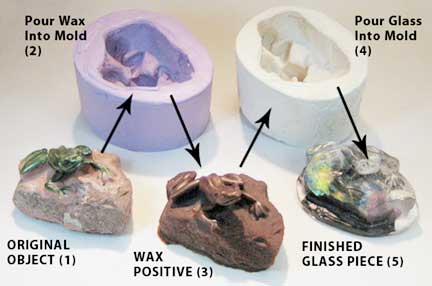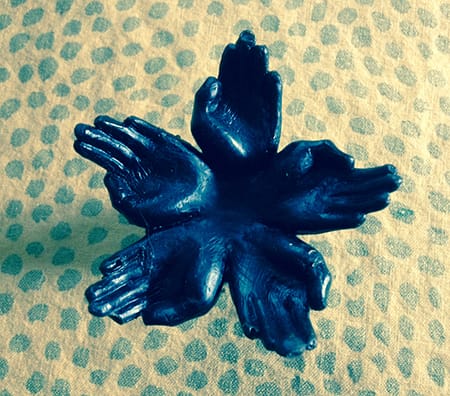Glass casting is one of the popular glass art ideas.
Glass casting is the process of melting the glass and pouring it into a mold, where it solidifies to form a glass object. This blog is all you need to know about glass casting methods.

Common Methods of Glass Casting
There are several methods for creating a mold to create one-of-a-kind artwork. The most common processes are sand casting and lost wax casting. These methods have been used for thousands of years. Thes are also used in metal casting.
Here we will discuss four methods of glass casting for beginners.
-
Lost Wax Casting
Lost wax casting creates a mold from a sacrificial wax model. The wax is melted out and made a cavity into which the glass flows after the mold investment is set. This glass casting method captures finer details.
-
Sand Casting
In sand casting, a design is sculpted into treated serpentine sand. The sand mold is then filled with molten hot glass and allowed to cool. Pull the sand away from the glass once it is cool enough to touch, to discover a perfectly solidified casting.
-
Open Faced Casting
When casting pieces have one side flat, such as a glass tile or a coaster, open-faced casting is used. Put plaster around a clay structure and allow it to set to create the mold. Start by removing the clay and completely drying the plaster mold in the oven once the plaster has hardened. The mold is then filled with glass and fired in a kiln.
-
Kiln Casting
Kiln casting is a form of glass casting that involves putting cold glass over a mold inside a kiln. The kiln is heated to molten temperatures, which causes the glass to stream into the mold. The glass object is annealed and left to cool as the kiln is gradually cooled to room temperature.
Glass Casting Supplies
Every successful glass project majorly depends on the right set of glass casting supplies. Here is a list of some essential supplies for glass casting:
- Safety Gear
Wear a respirator and work in a well-ventilated area to mix your investment. When melting the wax out of the mold, wear heavy-duty welding gloves.
- Wax
Make your layout in wax first, then build a mold around it. Shape it with texturing tools, a heat gun, and a soldering iron. Many skilled wax artists swear by repurposing dental tools to sculpt and carve innovative designs in wax.
- Molds
You can create your own molds by combining plaster and silica. Mix equal parts plaster, silica, and water until the mixture has the consistency of heavy cream. Plaster provides mold support, and silica has high heat-resistant temperatures, allowing it to withstand high temperatures. Alternatively, you can use readymade kiln casting molds for quick and convenient results.
- Scale
A gram scale is required to make your investment and calculate how much glass you will require.
- Kilns and its furnishings
A kiln big enough to fit your mold is required for melting and annealing the glass. Kiln furniture is used inside the kiln during firing to keep the molds and components from deforming or sticking together.
- Wallpaper Steamer
A wallpaper steamer is used to steam hot water into the mold. It melts out all the wax that is stuck inside the mold.
- Cold Working Equipment
In the final step of this process, you will polish and finish your piece with a grinder, belt sander, and other tools.

Casting Guide Wrapped Up!
With this, we come to an end of a meticulous glass casting guide. The glass artists can choose any of the casting methods as per their preference. Make sure you follow proper safety tips to prevent burns and cuts.
Our team at Art Glass Supplies will help you with everything you need for your glass art business.
